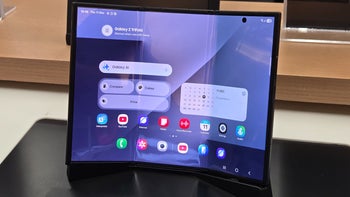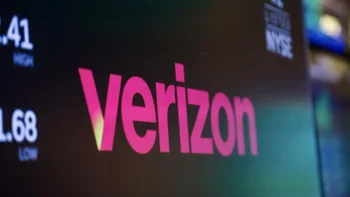All Pixel 9 phones ship with an older, slower storage tech. Are we okay with that?

Google has equipped the entire Pixel 9 series, including the Pixel 9 Pro Fold, with UFS 3.1 storage, despite the faster UFS 4.0 memory being available since before the Pixel 8's release.
The UFS 4.0 standard was announced in mid-2022 and we have been seeing it on flagships since 2023, though admittedly it isn't the default storage protocol.
Having said that, it's one thing for a mid-tier phone or even an entry-level flagship like the standard Galaxy S24 model with 128GB of storage to omit UFS 4.0 but an entirely different thing for high-end phones like the Pixel 9 Pro duo and 9 Pro Fold to ship with UFS 3.1 in 2024. Especially if they are vying for the title of the best phone of the year.
And it's not mere speculation as Google has confirmed that all of its new phones feature the UFS 3.1 protocol.
UFS 4.0 offers double the read speed of UFS 3.1 and 1.6x faster write speed. This translates to hitch-free multitasking and faster app load times.
As Android Authority points out, things other than flash storage specification also impact memory speed, including a phone's phone's chipset and memory controller. The theoretical importance of a new storage tech can't be undermined though, as proved by the fact that the Zenfone 11 Ultra, which boasts UFS 4.0, offers two and three times faster sequential read and write speeds, respectively, than the Pixel 9 Pro XL.
While that may sound like a huge difference, you are unlikely to feel it while using a phone, as sequential reads and writes don't matter all that much unless you routinely transfer heavy files or play big Android games. For commonly used apps such as Facebook, WhatsApp, and Maps, even UFS 2.2 will suffice.
The Pixel 9 is fast enough to make the most of a typical 5Gbps (625MB/s) USB 3.0 connection when copying data from the phone to a computer. On the other hand, transferring data to the phone is slower. To get the most out of your UFS 4.0 smartphone, you need a fast USB port on your laptop as well as a speedy SSD.
UFS 4.0 is 25 to 45 percent more efficient, so it sucks significantly less power than UFS 3.1. This isn't going to have a perceptible effect on battery life, considering storage only accounts for a small percentage of a phone's overall energy consumption.
With all that said, I still don't think Google did right by its customers by not going for UFS 4.0. After all, the Pixel 9 starts at $100 higher than the previous generation, and the AI features aren't enough to justify the hike.
Also, these are billed as AI phones, so they'd have benefited from faster storage speeds as this would have allowed for AI models to be quickly loaded into RAM. To make up for the deficiency, the Pro models have reserved 3GB of RAM for AI tasks.
The Pixel 9 will be supported for seven years, and the older storage tech might start showing its age a few years into the ownership. It doesn't help that UFS 3.1 lacks many of the new capabilities of UFS 4.0, such as wear leveling, which is a process that extends the life of solid-state storage devices.
The UFS 4.0 standard was announced in mid-2022 and we have been seeing it on flagships since 2023, though admittedly it isn't the default storage protocol.
UFS 4.0 offers double the read speed of UFS 3.1 and 1.6x faster write speed. This translates to hitch-free multitasking and faster app load times.
As Android Authority points out, things other than flash storage specification also impact memory speed, including a phone's phone's chipset and memory controller. The theoretical importance of a new storage tech can't be undermined though, as proved by the fact that the Zenfone 11 Ultra, which boasts UFS 4.0, offers two and three times faster sequential read and write speeds, respectively, than the Pixel 9 Pro XL.
The Pixel 9 is fast enough to make the most of a typical 5Gbps (625MB/s) USB 3.0 connection when copying data from the phone to a computer. On the other hand, transferring data to the phone is slower. To get the most out of your UFS 4.0 smartphone, you need a fast USB port on your laptop as well as a speedy SSD.
UFS 4.0 is 25 to 45 percent more efficient, so it sucks significantly less power than UFS 3.1. This isn't going to have a perceptible effect on battery life, considering storage only accounts for a small percentage of a phone's overall energy consumption.
It might be tempting for those who regularly transfer heavy files, such as videos, to go for a phone with UFS 4.0 but since most smartphones apply compression, UFS 3.1 can easily handle even 8K videos.
With all that said, I still don't think Google did right by its customers by not going for UFS 4.0. After all, the Pixel 9 starts at $100 higher than the previous generation, and the AI features aren't enough to justify the hike.
Also, these are billed as AI phones, so they'd have benefited from faster storage speeds as this would have allowed for AI models to be quickly loaded into RAM. To make up for the deficiency, the Pro models have reserved 3GB of RAM for AI tasks.
The Pixel 9 will be supported for seven years, and the older storage tech might start showing its age a few years into the ownership. It doesn't help that UFS 3.1 lacks many of the new capabilities of UFS 4.0, such as wear leveling, which is a process that extends the life of solid-state storage devices.
Follow us on Google News












Things that are NOT allowed:
To help keep our community safe and free from spam, we apply temporary limits to newly created accounts: